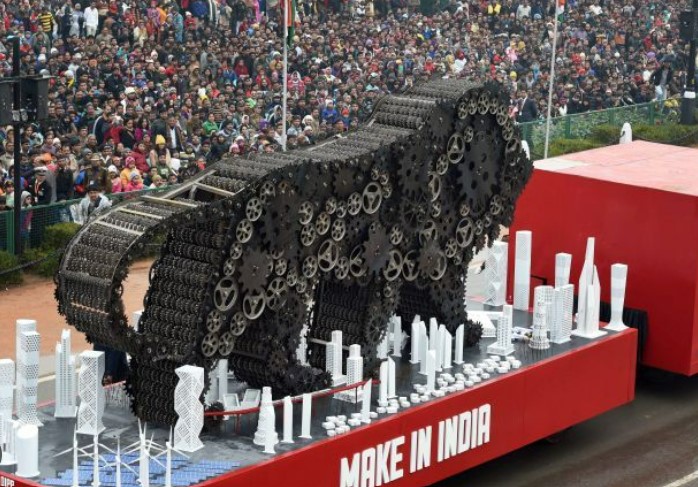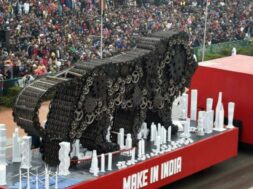
Roving Periscope: With Apple as an anchor, the West sees India as “China plus One”
Virendra Pandit
New Delhi: For a change, the Western countries are now seeing India in a new light, as “China plus one,” somewhat the way they had viewed China as a “Japan plus One” way back in the 1980s to counter the then challenger, the USSR.
India is making a concerted push to be the ‘plus one’ as Western companies are desperately looking for a backup to China as the world’s factory floor, The Wall Street Journal (WSJ) observed on Tuesday.
But India is not alone. Other countries like Vietnam, Mexico, Thailand, and Malaysia are also coming up on the list of “China plus One.”
Three weeks after Apple opened its first two stores in India, the paper said only India has a labor force and an internal market comparable to China’s. The West sees a democratic India as a ‘natural partner’ and New Delhi has pushed to make the business environment more friendly than ever.
The WSJ referred to the sprawling industrial parks in Sriperumbudur in Tamil Nadu churning out automobiles and appliances for the Indian market. Even multinational companies are making goods like solar panels and wind turbines, toys, and footwear, to diversify production away from China.
“We don’t want all our eggs in one basket in China,” The WSJ quoted Charles McCall, from Vestas Assembly India, as saying. Eventually, 85 percent of Vestas’s suppliers will be in India, he added.
Even now, China remains numero uno in global manufacturing, a position it cemented when multinationals flooded in after it joined the World Trade Organization in 2001. But several factors have prompted companies to search for a backup. Some of these are the rising labor costs in China; pressure from Beijing to transfer technology to Western corporations’ Chinese competitors; the US imposing tariffs on Chinese imports in 2018; the Covid lockdowns from 2020 until November 2022, and now a push by the West to decouple their economies from the Asian giant.
Until now, India faced bottlenecks like an unskilled labor force, underdeveloped
Infrastructure, burdensome regulations, and business climate. They all kept manufacturing quite small for an economy of this size.
Some of them still remain but the climate is changing now. India’s manufactured exports were barely a tenth of China’s in 2021, but they exceeded all other emerging markets except Mexico’s and Vietnam’s, according to World Bank data.
In particular, exports of electronic goods have tripled since 2018 to USD 23 billion in March 2023. India, which manufactured 9 percent of the world’s smartphone handsets in 2016, is projected to make 19 percent this year.
Likewise, foreign direct investment (FDI) into India doubled within a decade to an average of USD 42 billion annually in 2022, the Reserve Bank of India (RBI) data showed.
Ever since China declared a “no limits” friendship with Russia just before Moscow invaded Ukraine in February 2022, the US and its allies stepped up efforts to reduce dependence on Beijing. Through “friend-shoring,” America is “strengthening integration with our many trusted trading partners–including India,” Treasury Secretary Janet Yellen said on a visit to New Delhi in February.
Apple, Inc. has marked out the detour from China to India. Since the 2010s, it the built up a state-of-the-art supply chain almost entirely in China to make its laptops, iPhones, and accessories. It became an anchor company helping the entire manufacturing sector in China.
But, the California-based company also started assembling lower-end iPhone models in India in 2017 and began making its flagship iPhone 14 here within weeks of its launch in 2022. According to JP Morgan, a quarter of all Apple iPhones will be made in India by 2025.
“Very often you have anchor companies who set the trend,” Indian Minister for Commerce and Industry Piyush Goyal said. “We believe this will send a strong signal…to other companies in Europe, America, and Japan.”
Apple started pushing suppliers to diversify beyond China after they faced production disruptions during Covid-19 lockdowns, geopolitical tensions between the US and China, and also between Beijing and Taiwan—where Foxconn Technology Group, Apple’s manufacturer, is headquartered.
Now, Foxconn is expanding production of iPhones at its existing plant near Chennai, aiming to boost production to 20 million units annually by 2024 and triple the number of workers to 100,000.
Besides, India is also removing some barriers to business. In 2014, Prime Minister Narendra Modi unveiled the “Make in India,” drive as an effort to boost manufacturing. India has since speedily digitized many government services and accelerated the construction of railroads, airports, container shipping ports, and electricity generation.
India also introduced tax and customs rebates for exports in 2015 and overhauled them in 2021. The customs rebates were “the trigger point for the entire electronic industry,” said Sasikumar Gendham, Managing Director of Finland’s Salcomp, the world’s largest maker of smartphone chargers and supplier to Apple.
No wonder, since 2014, Salcomp’s Indian workforce has increased sixfold to 12,000, and aims to hire 25,000 people in the next two years. The facility churns out about 100 million units every year, compared with its China facility which produces about 180 million units.
But some bottlenecks remain. It takes the industrialist longer to get land and approvals to set up a factory in India and get visas for expatriate technicians, engineers, and managers.
In March 2020, India introduced “production-linked incentives” that directly subsidize targeted products, starting with mobile phones and components, pharmaceuticals, and medical devices. But some found the process to claim PLI incentives burdensome.
Some companies face a shortage of skilled labor in Indian manufacturing hubs because, unlike in China, many workers are reluctant to relocate long distances in search of work. Also, trade unions are stronger in India than in China.
India’s manufacturing policy also differs from China’s. While China encouraged foreign companies to locate supply chains in special economic zones (SEZs) with reduced tariffs on imported components and machinery, the “Make in India” campaign raised import tariffs and sought to replace imports with domestically-manufactured products.
Those tariffs discourage industries that import many components. “India is protectionist in precisely those sectors, goods manufacturing, where the China+1 opportunity arises,” Viral Acharya, an economist at New York University and former RBI Deputy Governor, said.
In its annual review of India’s economy in December 2022, the International Monetary Fund said its integration into global value chains has stalled.
Manufacturing’s share of Indian economic output has actually shrunk since the “Make in India” was launched, to 14 percent in 2021-–far below that of Mexico, Vietnam, and Bangladesh.














